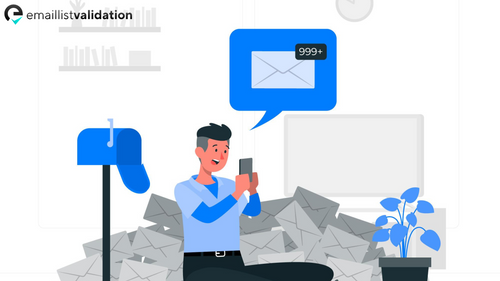In the complex field of digital marketing, especially in the business-to-business (B2B) area, email marketing is a key strategy. However, there's a sneaky problem that a lot of marketers run into - the danger of spam traps. Knowing what these traps are and how to avoid them is really important if you want your email campaigns to work well and be trustworthy. To help you avoid these spam traps, there's this detailed guide. It highlights the importance of using a tool called Email List Validation, which is super important for anyone doing digital marketing.
Understanding Spam Traps
Spam traps in email marketing are similar to hidden cameras that are hard to notice. They appear to be normal email addresses, but their real purpose is to identify and catch emails that no one asked for. They're really useful because they help keep our inboxes clear of unwanted emails. However, sometimes even marketers who are following the rules can accidentally get caught by these traps.
Types of Spam Traps
Pure Spam Traps:
- These are email addresses created solely to attract spam. They are not used for any legitimate communication. Accidentally sending an email to these addresses can flag you as a spammer.
Recycled Spam Traps:
- These are old, once-valid email addresses repurposed as spam traps. They catch marketers who use outdated email lists.
Common Ways Marketers Fall into Spam Traps
- Sending emails to outdated lists.
- Not regularly cleaning and updating email databases.
- Conducting cold email campaigns without proper research and validation.
The Role of Email List Validation
Email List Validation plays a crucial role in your email marketing strategy. It helps ensure that your email list is clean, valid, and free from potential spam traps by:
- Checking Email Validity: Confirming that each email on your list is active and valid.
- Email Verification: Verifying the authenticity of each email address.
- Using Email Verifier Tools: These tools scan your email list to filter out invalid addresses.
- Implementing an Email Verification Tool: This tool is key in maintaining a healthy email list.
FAQs
Why is email validation necessary?
Email validation is critical for ensuring that your emails reach actual, active users, thereby increasing the effectiveness of your marketing campaigns.
How often should I use Email List Validation?
Regularly, especially before major campaigns or after acquiring new lists, to maintain the health of your email database.
Can Email List Validation improve campaign ROI?
Absolutely. By reaching valid email addresses, you're more likely to engage potential customers, thus improving your return on investment.
Is it important to verify small email lists?
Yes, even small lists should be verified to ensure that every email you send counts and reaches the intended recipient.
Key Takeaways for Avoiding Email Spam Traps
Prioritize Data Hygiene: Regularly update and clean your email lists with Email List Validation to avoid hitting spam traps.
Educate Your Team: Ensure your marketing team understands the importance of using updated and verified email lists.
Leverage Email List Validation: Utilize this tool to regularly check email validity and maintain a high-quality email list.
Be Cautious with Cold Emailing: If you must send cold emails, ensure they are targeted and validated to avoid spam traps.
Monitor Campaign Performance: Keep an eye on email campaign metrics to identify any signs of being flagged as spam.
Conclusion
In the quick-moving world of email marketing, getting caught in spam traps is a big problem. But, if you use tools like Email List Validation and follow good email practices, you can avoid these issues. It's important to know that doing well in email marketing isn’t just about what you write in your emails. It's also about making sure your emails are getting to the right people. This means you need to keep your email list clean and make sure the addresses on it are correct and current.



